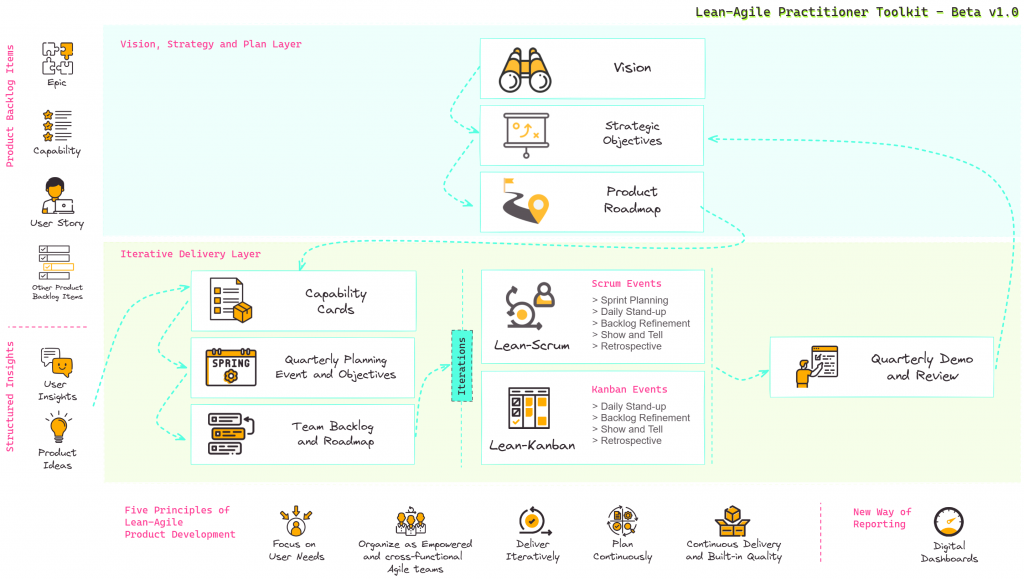In Lean-Agile product delivery, planning occurs at different levels. A product roadmap is a high-level plan that outlines capabilities and milestones needed to achieve strategic objectives. It typically covers a one to two-year period, with the highest level of detail for the current quarter and decreasing clarity for longer timeframes.
The product roadmap works alongside three other planning layers:
- Portfolio Plan: This plan merges product roadmaps for various products within a portfolio. For Lean-Agile practitioners, I recommend building a product roadmap template first, as these can be easily merged to create the portfolio plan. Creating a separate plan from scratch is not recommended.
- Quarterly Plan: This plan details product objectives for the current quarter. For more details on this layer: Quarterly Planning Event and Quarterly Objectives
- Team Roadmap: This plan is a further breakdown of the quarterly plan, outlining placeholder user stories assigned to each sprint (in Lean-Scrum). For more details on this layer: Team Backlog and Roadmap
Prioritization of capabilities on the product roadmap is primarily driven by strategic objectives. For example, if a strategic objective is “completing the first Private Beta release in six months,” the minimum capabilities needed to achieve this should be identified. If the target beta users are from a single internal department with specific limited activities, implementing the entire “Access and Role Management” epic might be unnecessary. Providing secure access might suffice for the initial beta.
Characteristics of a Good Product Roadmap:
- Reflects: Strategic objectives
- Shows: 1-2 year timeframe only
- Decreasing clarity: For longer periods
- Dynamic: Regularly reviewed and updated (at least quarterly)
An example
[A visual example will come here]


